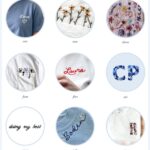I. Understanding Upcycling: Definition and Concept
II. Benefits of Upcycling: Environmental and Economic Advantages
III. Creative Upcycling Ideas: How to Transform Waste into Useful Items
Understanding Upcycling: Definition and Concept
Hey there! Have you ever looked at something you were about to throw away and thought, “I could do something with that”? If so, you’re already tapping into the exciting world of upcycling! Let’s dive into what upcycling really means and why it’s gaining so much popularity these days.
What is Upcycling?
At its core, upcycling is the creative process of taking unwanted materials or products and transforming them into something new and useful. Unlike recycling, which often breaks down materials to their raw form to create something entirely different, upcycling gives a second life to items without needing that extensive process. It’s all about enhancing the value of what you already have.
The Concept Behind Upcycling
Think of upcycling as a form of creative recycling. It encourages us to look at waste differently—seeing potential instead of garbage. For example:
- A used wooden pallet could become a rustic coffee table.
- Old jars can be repurposed as charming storage containers.
- Worn-out clothes could be transformed into stylish tote bags.
These examples illustrate the beauty of upcycling: it’s a way to combine sustainability with creativity. It allows us to express our individual style while also being conscious of our consumption habits.
The Rise of Upcycling
In recent years, upcycling has gained traction for several reasons. As more people become aware of environmental issues, the need to reduce waste and rethink our consumption habits has never been more urgent. Upcycling not only helps to minimize landfill waste but also encourages us to be inventive and resourceful. And let’s be honest—it feels pretty great to create something unique out of something that might have ended up in the trash!
Moreover, with the rise of social media platforms, beautiful upcycled creations are shared worldwide, inspiring countless individuals to join the movement. Whether through DIY videos on TikTok or stunning visuals on Instagram, the upcycling community is vibrant and welcoming. You don’t need to be a master crafter; anyone can give it a shot!
Getting Started with Upcycling
If you’re curious about trying your hand at upcycling, start small! Look around your home for items that have outlived their original purpose. Ask yourself how you can transform them into something fresh and functional. You’ll be amazed at the possibilities!
Here are a few tips to kick-start your upcycling journey:
- Look for inspiration: Browse online platforms or visit local craft fairs to see what others are creating.
- Gather your supplies: Keep a box or designated area for items you might want to upcycle in the future.
- Experiment: Don’t be afraid to make mistakes! The process of creating is just as important as the final product.
So there you have it! Upcycling is not just a trend; it’s a wonderful way to rethink what we consider waste. By embracing this concept, you’re not only contributing to a more sustainable world but also unlocking your creative potential. Happy upcycling!
Benefits of Upcycling: Environmental and Economic Advantages
Hey there! Have you ever thought about what happens to all the stuff we throw away? It’s a big deal! Upcycling, which is all about creatively reusing materials, is a fantastic way to address waste while also enjoying a host of benefits. Let’s dive into the reasons why upcycling is not just a trend, but a smart choice for both our planet and our wallets!
Environmental Advantages
One of the primary benefits of upcycling is its positive impact on the environment. Here’s how:
- Reduces Waste: Upcycling gives new life to items that would otherwise end up in landfills. By transforming these materials into something useful, we can significantly reduce the amount of waste we generate. Every little bit counts!
- Conserves Resources: Manufacturing new products often requires a hefty amount of natural resources—think trees for paper, minerals for electronics, or water for textiles. Upcycling minimizes the demand for new materials, which means fewer resources are extracted from our planet.
- Lowers Carbon Footprint: The production, transportation, and disposal of goods contribute to greenhouse gas emissions. By choosing to upcycle, we are cutting down on the energy needed to make new products, thereby helping to reduce our overall carbon footprint.
Economic Advantages
But wait, there’s more! Upcycling doesn’t just help the Earth; it can also have a positive effect on your wallet. Here’s how:
- Saves Money: Instead of purchasing new items, you can save a significant amount by upcycling what you already have. That old chair you were thinking of tossing? With a little creativity, it could become a trendy plant stand!
- Supports Local Economies: Many upcycling projects can be done at home or within your community. By engaging in this practice, you’re often shopping local for supplies, which supports small businesses and boosts your local economy.
- Potential for Profit: If you’re particularly crafty, upcycling could even lead to a side hustle! Many people sell their upcycled creations at local markets or online platforms. You’d be amazed at what people are willing to pay for unique, handmade items!
Emotional and Social Benefits
Let’s not forget the emotional aspect! Upcycling can also provide social and psychological benefits:
- Fosters Creativity: Getting involved in upcycling encourages you to think outside the box. It stimulates your creativity and can be a fun, rewarding hobby that allows you to express your artistic side.
- Builds Community: Many upcycling projects can be done in groups or workshops, helping to build community bonds. Sharing ideas and collaborating with others can lead to friendships and a sense of belonging.
In a nutshell, upcycling is more than just a buzzword; it’s a powerful tool for making a positive impact on the environment, saving money, and even boosting community ties. Next time you’re about to toss something away, pause for a moment and think: “How can I give this a new life?” You might just be surprised by what you come up with!
Creative Upcycling Ideas: How to Transform Waste into Useful Items
Upcycling is one of those magical concepts where you can turn what most people see as trash into something beautiful and functional! If you’ve ever looked at an empty bottle or an old pair of jeans and thought, “This could be something more,” then you’re on the right track. Let’s dive into some creative upcycling ideas that will inspire you to see the potential in your waste!
1. Glass Jar Marvels
Those glass jars you get from sauces, jams, or even pickles can be transformed in so many ways:
- Planters: Turn them into charming mini planters for succulent plants. Just add some soil and a small plant, and you’ve got a lovely display!
- Candle Holders: Fill them with wax and a wick, or place a tea light inside for a cozy ambiance.
- Storage Containers: Use them to organize craft supplies, kitchen items, or even as a quirky way to store office supplies.
2. T-Shirt Tote Bags
Got a shirt you no longer wear? Don’t toss it! Instead, you can turn it into a stylish tote bag. Here’s how:
- Cut off the sleeves and neckline to create the bag opening.
- Turn the shirt inside out and stitch or tie the bottom closed.
- Flip it back outside, and voila! You’ve got a unique bag that’s perfect for grocery shopping or running errands!
3. Wooden Pallet Projects
Wooden pallets are treasures waiting to be discovered! Here are a few ideas to get you started:
- Furniture: With some effort, you can create stunning coffee tables, garden benches, or even a bed frame from pallets.
- Wall Art: Sand down a pallet, paint it, and use it as a canvas for your next DIY artwork!
- Vertical Garden: Stack pallets vertically to create a space-saving garden for herbs or flowers.
4. Upcycled Bottle Planters
Plastic bottles are a significant source of waste, but they can become eye-catching planters:
- Hanging Planters: Cut bottles in half, fill them with soil and plants, and hang them on a wall for a vertical garden effect.
- Self-Watering Planters: Create a self-watering effect by using a wick that draws water from a reservoir bottle to ensure your plants stay hydrated.
5. Old Furniture Makeovers
If you have old furniture that’s seen better days, why not give it a facelift?
- Paint or Stain: A fresh coat of paint or stain can completely change the look of a piece.
- Reupholster: Change the fabric on chairs or cushions; it can breathe new life into them!
- Repurpose: Transform an old dresser into a TV stand or an end table into a pet bed.
So, whether you’re a DIY novice or a seasoned crafter, there’s always something creative you can do with items that might otherwise end up in the landfill. Embrace the challenge, and let your imagination soar—upcycling is not just recycling; it’s a chance to create something beautiful out of the ordinary!





Comments